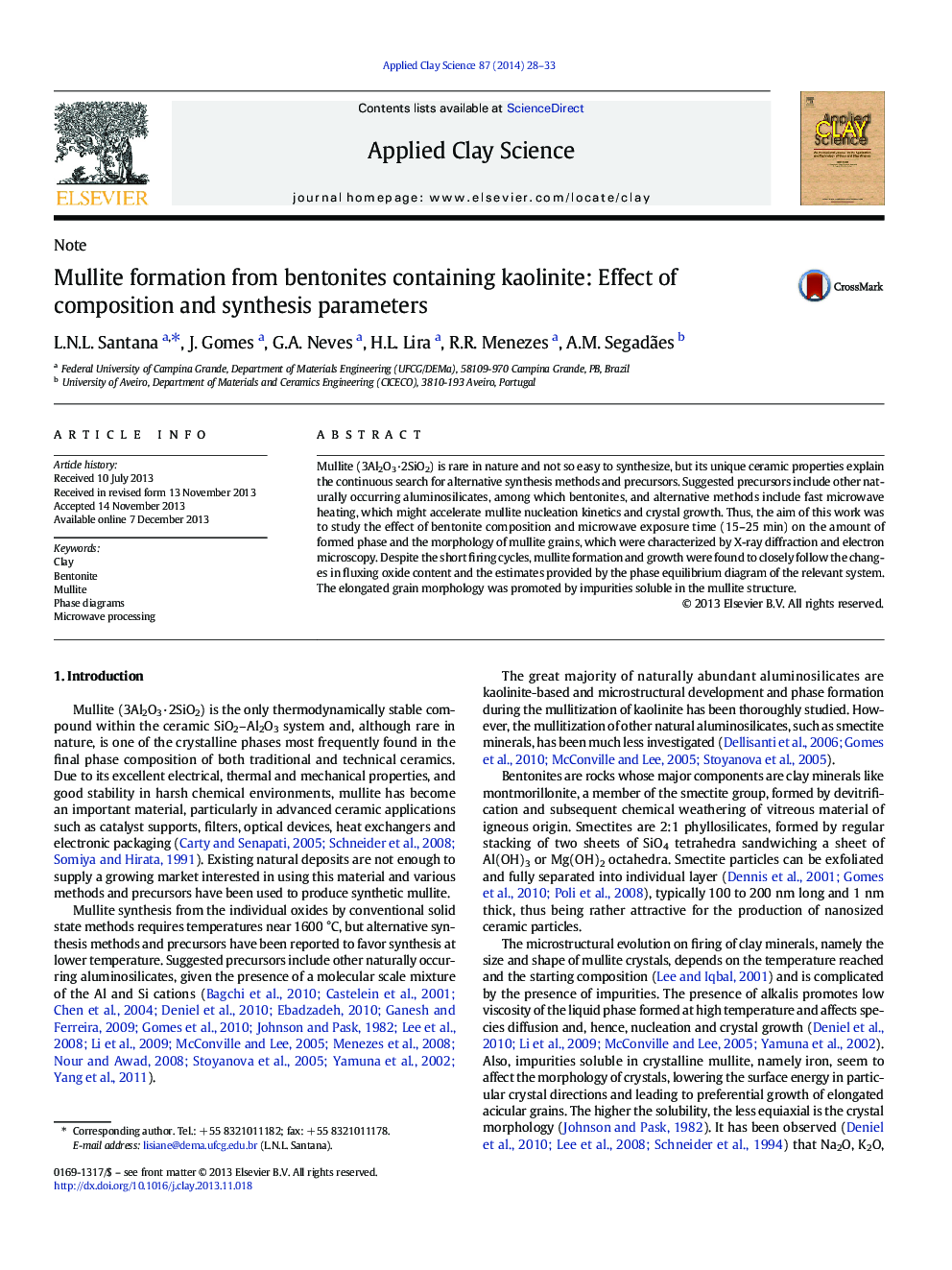| Article ID | Journal | Published Year | Pages | File Type |
|---|---|---|---|---|
| 1694980 | Applied Clay Science | 2014 | 6 Pages |
Mullite (3Al2O3·2SiO2) is rare in nature and not so easy to synthesize, but its unique ceramic properties explain the continuous search for alternative synthesis methods and precursors. Suggested precursors include other naturally occurring aluminosilicates, among which bentonites, and alternative methods include fast microwave heating, which might accelerate mullite nucleation kinetics and crystal growth. Thus, the aim of this work was to study the effect of bentonite composition and microwave exposure time (15–25 min) on the amount of formed phase and the morphology of mullite grains, which were characterized by X-ray diffraction and electron microscopy. Despite the short firing cycles, mullite formation and growth were found to closely follow the changes in fluxing oxide content and the estimates provided by the phase equilibrium diagram of the relevant system. The elongated grain morphology was promoted by impurities soluble in the mullite structure.
